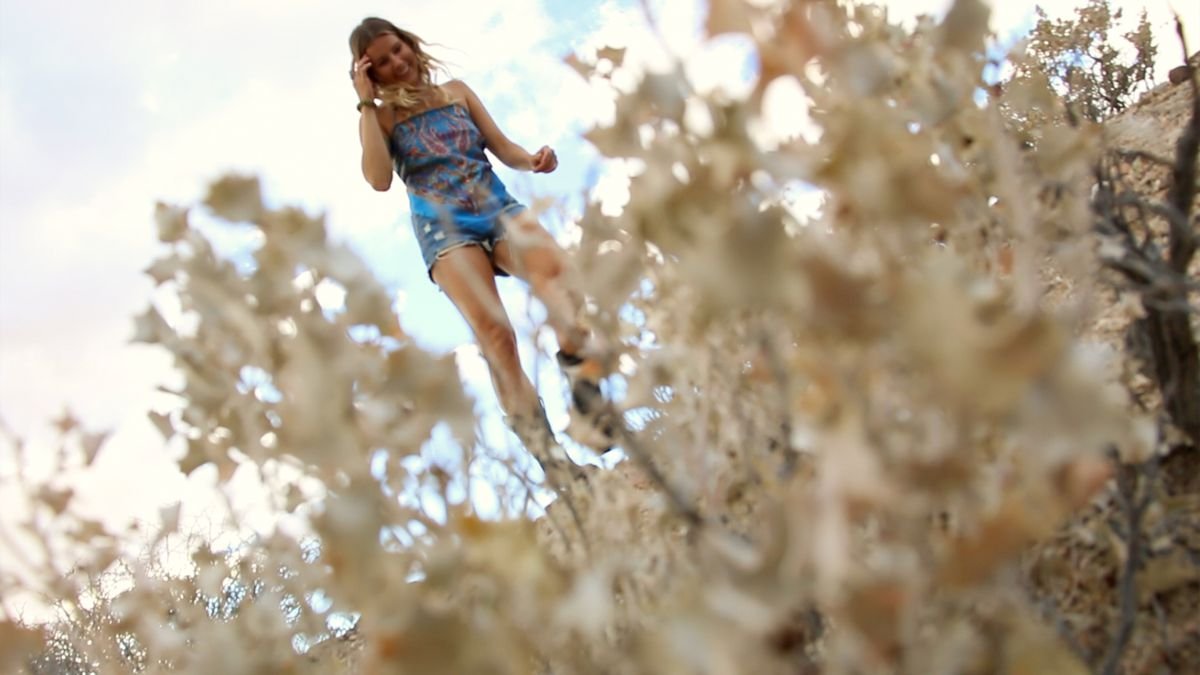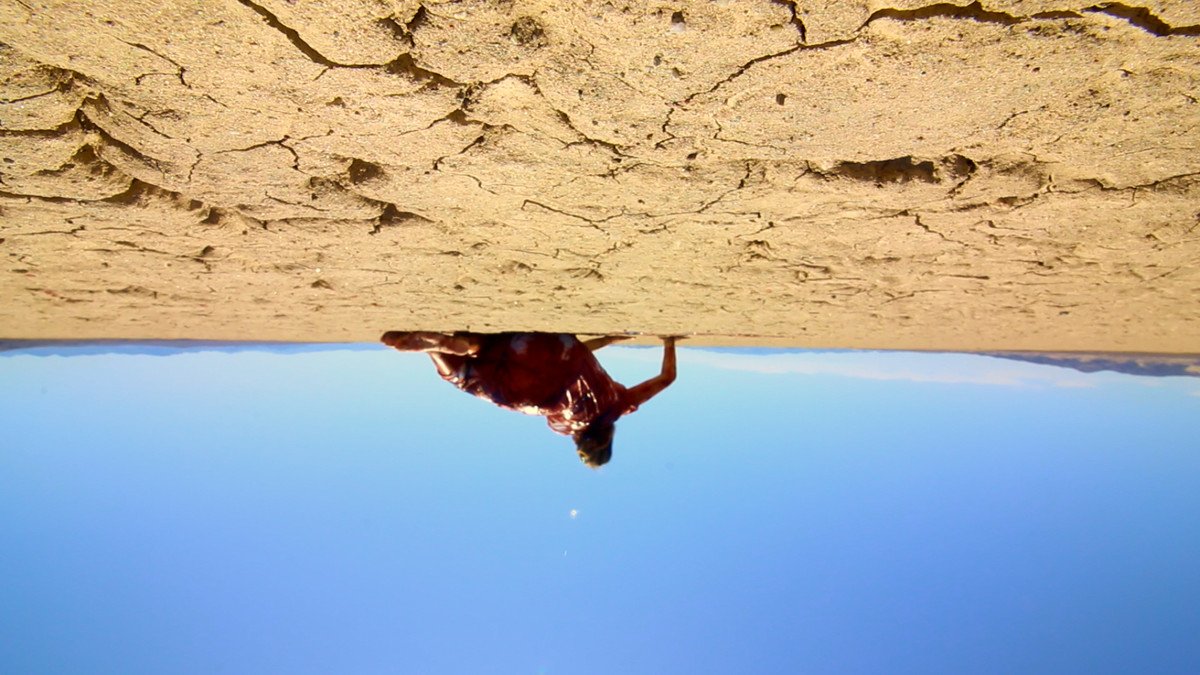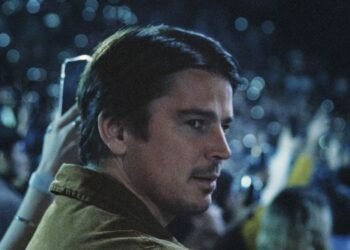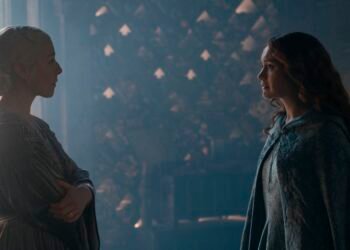The greatest claim to fame of horror’s found-footage subgenre has always been its pretense of authenticity — movies like The Blair Witch Project or the original Paranormal Activity were designed as such convincing facsimiles of real life that they were meant to be indistinguishable from the final work of some doomed amateur documentarian. But as the subgenre expanded, producing great movies like [REC.] and awful ones like Chernobyl Diaries, the idea of these movies capturing “real life” became an excuse for low-budget, low-fi filmmaking. That’s what makes The Outwaters, the new horror movie written, directed by, and starring Robbie Banfitch, so interesting: It uses the trappings of found footage just enough that Banfitch can cleverly break the rules once things really get creepy.
The Outwaters follows a group of four 30-somethings who go adventuring in the desert in hopes of recording the perfect music video. The movie starts off recognizably enough: Robbie (Banfitch), a documentarian type, holds the camera, capturing moments of the group’s life together and their first few days in the desert in extreme close-up. That gives the movie a remarkable sense of creeping loneliness early on, as the open Mojave surrounds them.

Photo: Cinedigm
But even in these early moments, the camera does more than report what’s happening, as found-footage films normally do. Instead, it also shows us Robbie’s thoughts and longings, letting us sit with him as he films Michelle (Michelle May), his group’s singer, for much longer than he should. These moments feel right in line with The Outwaters’ style, but they’re directly antithetical to the usual found-footage tropes. These beats would look odd in the real world, and would certainly be remarked on by Robbie’s friends, let alone by his actual girlfriend. Instead, they’re the first real clue that The Outwaters is pushing the limits of found footage rather than playing by its rules.
Further breaking from convention, The Outwaters doesn’t ramp its action up like most found-footage horror. Instead of subtly drawing out creepier and creepier moments before letting things really break open, Banfitch focuses tightly on the friends’ normal camping trip for an exhausting (and entirely too long) 45-ish minutes. Once the characters finally do get themselves into trouble, all hell breaks loose right away.
This is where the film’s real trick begins. Characters die, characters hurt themselves, strange men show up with axes and frame themselves against the horizon, and most importantly, Robbie loses it completely. The further afield from reality he gets, the more his footage shifts into something that feels pulled directly from his slowly warping brain, rather than from any kind of camera at all.

Photo: Cinedigm
Getting these almost-point-of-view shots from Robbie is a fantastically disorienting experience. Banfitch is still conscious of the camera, and still uses its limitations often, which makes the subjective shifts even harder to spot and more unnerving. It feels as if something reached over Robbie’s shoulder to hold the camera for him, just so we could get a sense of whatever new, grossly gory task his disappearing mind has set him to.
When it’s working, The Outwaters feels like the audience has been invited to witness the horrors running through Mike’s head at the end of The Blair Witch Project as he stares into the corner in the basement. Robbie becomes a witness to the terrors of fraying reality, but also to things more cosmic and less terrestrial, and we get to see both firsthand, thanks to the movie’s blending of his footage and his breakdown. At its best, The Outwaters places us so far inside Robbie’s brain that we can’t get the distance we crave to make sense of what we’re being shown. But it finds its biggest problems when it comes back to reality for more concrete scares.
Among the problems with this method of ethereal found footage — which sometimes borders on just being a first-person experiential movie — is that it’s rarely easy to keep the camera trained on whatever’s happening to the characters. Too often, Banfitch obscures The Outwaters’ biggest moments, undercutting their creepy potential. Scenes in the movie’s back half are usually lit by flashlight or not at all, making the action frustratingly hard to see, and obscuring what could have been more meaningfully creepy additions to the film. The near-blindness is slightly unnerving, but it’s more confusing than anything else, leaving some sections without any sense of direction or dread.
Perhaps The Outwaters’ most definitively found-footage-inspired issue comes in its framing device: a series of three memory cards we’re supposed to believe were found somewhere in the desert, the last evidence of the characters’ disappearance. This is a subgenre classic: the “It could all be real!” feint that some found-footage movies have used to lend the movie some real-world weight. But The Outwaters doesn’t need that gimmick. Its footage is effective enough on its own, especially when we’re witnessing things that seem impossible for the camera to have captured, which strains the memory-card framing beyond belief. The actual immersion is excellent, but the faux-immersion doesn’t track.

Photo: Cinedigm
The Outwaters isn’t as great a subversion of the found-footage subgenre as something like Joel Anderson’s 2008 horror mockumentary Lake Mungo, where the inherent fakeness is built not just into the plot, but into its conclusion as well. In Lake Mungo, the idea that the images on screen are false is fundamental, calling into question the accuracy of the story, the subjectivity of who’s telling it, and whether any of it should be trusted at all, even in a fictional film. Lake Mungo uses the questions behind found footage as a stand-in for the different ways we process grief, and the ways the dead stick with some of us in photographs and memories (and maybe other places) long after they’re gone.
While The Outwaters never entirely reaches those lofty highs, it does similarly demand more of its audience than the average found-footage film. It works within the confines of the genre only long enough to break the traditions, and by the time all hell breaks loose, it’s so far past the boundaries of the subgenre that it becomes something else entirely. The mixture of point-of-view shots, traditional found footage, and the sense of some eerie third-party observer unstuck from time or reality all create an effect that takes us deeper into Robbie’s unraveling mind than a more conventional horror movie ever could.
The Outwaters is in select theaters now. It can be streamed on Screambox or rented on VOD from services like Amazon or YouTube.















































